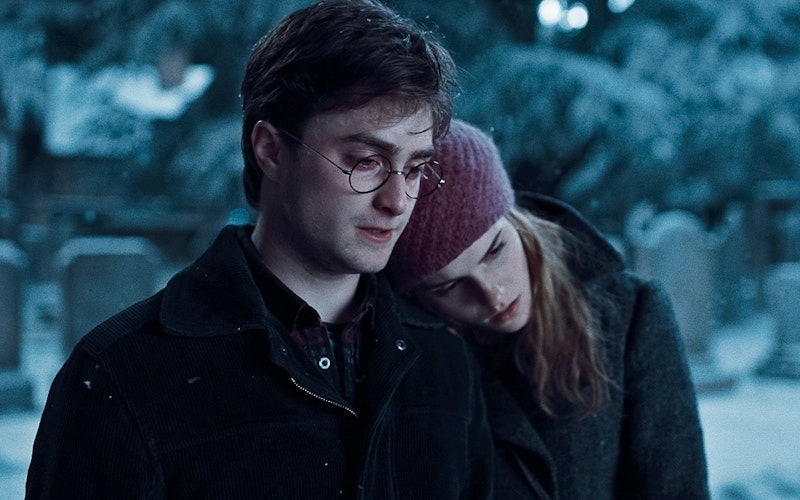
Movies
Harry Potter and the Power of Sadness
Harry Potter and the Deathly Hallows – Part I seems to take place entirely at daybreak. Not a warm, yellow daybreak, mind you, but the muted sort we get this time of year. The bluestone palette that has been creeping into the series has taken hold like a November chill.
As the film franchise winds up its run—Part II, the finale, comes out in July—things are dire in both visual and narrative terms. Harry (Daniel Radcliffe) and pals Hermione (Emma Watson) and Ron (Rupert Grint) are on the run, far from the once-safe halls of Hogwarts School of Witchcraft and Wizardry. Meanwhile, the evil Voldemort (Ralph Fiennes) is gathering his dark forces, bent on hunting down Harry, the only wizard who can challenge his power.
The most artful moments in Deathly Hallows – Part I are also the saddest. Before going into hiding, Hermione casts a spell on her parents so that they’ll forget she was ever born. As she slips out of the house, her image fades from the family photos on the mantel as if she were a ghost. Later, Hermione conjures a wreath to rest at the headstone of Harry’s parents. It’s an act of wondrous grief.
Even the settings echo the somber tone. While the previous films have focused on imaginatively elaborate cathedrals, huts and halls (production designer Stuart Craig remains the series’ MVP), Deathly Hallows – Part I mostly finds itself outside, set amidst barren heaths, in threatening forests and on frozen ponds.
All of this is in contrast to the previous films, which had their dark moments, to be sure, but also their zippy ones. Viewers unfamiliar with J.K. Rowling’s last book might wonder, what is this profound sadness? Isn’t magic meant for fun, silly things like pulling rabbits out of hats?
Sometimes it’s easier to identify with movies that leave things in disconsolate limbo.
Dismay, though, defines some of our best art. Indeed, in fantasy series such as this, it is often the moodier installments—The Lord of the Rings: The Two Towers,Star Wars: The Empire Strikes Back—that are remembered with the most affection. Similarly, some of the most affecting Bible stories are those of trouble and failure: Judas’ betrayal, Peter’s denial, Samson. Why does melancholy hold such power over us? Why do the saddest tales sometimes carry the most resonance?
I wonder if it might have something to do with our inherently fallen state—the inner awareness that, on our own, we are far from God. Sometimes it’s easier to identify with movies that leave things in disconsolate limbo rather than those that offer the closure of a happy ending. Perhaps the flicker of the projector casts a light best on our current fallibility, not our future promise.
Of course, we did eventually get to Star Wars: Return of the Jedi and The Lord of the Rings: The Return of the King. That so much of our art eventually comes around to these finales of redemption and renewal speaks to our enduring faith in God’s promise of a better tomorrow. Those redemptive tales are the stories we hope for. But for now, especially on our darker days, Deathly Hallows – Part I is the story we know.
Topics: Movies